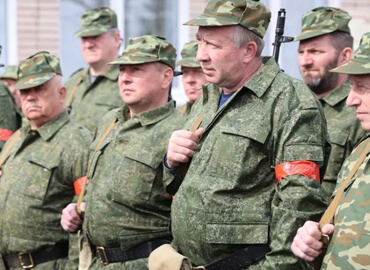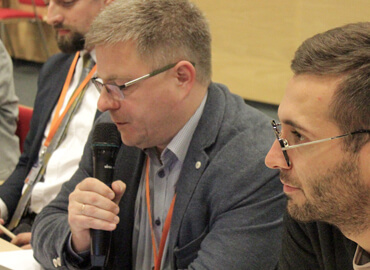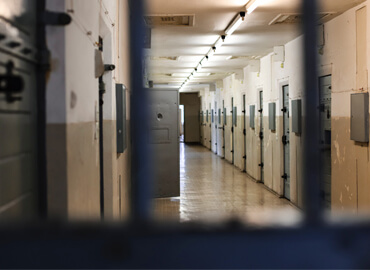In recent weeks, an open demonstration of the Kremlin’s plans to militarize Belarus has been observed. Moscow is systematically implementing a strategy to expand Russian presence in Belarus and deepen integration of the two countries’ armed forces. For this, the Kremlin has been using Lukashenko, who has agreed to increase Belarus’s dependence on Russia to maintain his own power.
The fifth meeting this year between Putin and Lukashenko demonstrated Russia’s clear dominance in matters of military cooperation and in Belarus’s economic and information spheres.
It is no coincidence that the meeting took place on the eve of the start of the Zapad-2021 joint strategic military exercises, which are being used to further the Kremlin’s militarization of Belarus.
Attention is being drawn to the scale of the exercises, with Russia demonstrating the strength and capabilities of offensive operations near the western borders of the Union State. According to official media, the exercises are being held September 10-16 at five training grounds in Belarus and at nine in Russia. They involve 200,000 servicemen, of whom 12,800 are in Belarus, including 2,500 Russian military personnel.
In parallel with the participants in the Zapad-2021 exercises, Russian equipment and military personnel were also transported to Belarus and whose presence in the country will be much longer and have long-term consequences. This involves a joint Russian-Belarusian combat training center, the first Russian fighters for which landed at the airfield in Baranovichi on September 8.
The Kremlin has increased pressure on Minsk since early September, eroding Belarus’s sovereignty in the Russian sphere of influence
Following the meeting on September 9, Putin and Lukashenko announced the agreement of 28 roadmaps to deepen the integration between Russia and Belarus. Although no one has seen the documents themselves yet, and their final signing is scheduled for November, the contours of the Union State are becoming more and more clear.
Strengthening military cooperation looks natural against the background of Lukashenko’s statements at talks with Putin regarding his readiness to further deepen integration with Russia: «If we need an even closer military, political or, taking another direction, economic integration, we will do it instantly, as soon as we sense the demands of our people in Belarus and Russia.»
Back in February 2020, Lukashenko tried to build an image as the guardian of Belarusian independence, but now at a meeting with Putin he says: «If we need to have very close relations – even more powerful than in a unitary state – we will do it easily.»
At the same time, Moscow is in no hurry to express reciprocity. The Kremlin first needs to gain control over key sectors of the Belarusian economy and a maximum military presence in country. The actual integration of states at the level of government bodies is becoming less important.
Putin talks about the future prospect of creating a union parliament, but when it happens and under what conditions it is not yet important. The priority is economic integration, or more precisely, absorption: «We believe that first the economy must be dealt with, and then everything will naturally require additional regulation. This could also include at level of the union parliament – I am not ruling out the fact that such a thing could be created.»
Lukashenko, as usual, is trying to hold on to opportunities for bargaining, though he has fewer and fewer options and fewer cards to play. Nevertheless, he may delay indefinitely the implementation of roadmaps for the Union State. This means that he will continue to make attempts to bargain for himself as much as possible in exchange for Belarusian sovereignty.
It is likely that later Lukashenko will try to play everything as before, but now he is readily demonstrating a new level of military cooperation with Russia. The Kremlin is using this moment to consolidate this new, irreversible nature of relations with Belarus.
Why does Lukashenko need Russian weapons?
At the training ground near Baranovichi, where one of the stages of the Zapad-2021 exercise is taking place, Lukashenko said that Belarus would purchase weapons from Russia for almost $1 billion. This means dozens of aircraft and helicopters, the Tor-M2 air defense system, and a supply of Russian S-400 anti-aircraft missile systems.
Plans to purchase Russian equipment are presented as a necessary response to the threat that supposedly comes to Belarus and Russia from NATO and Ukraine: «We must prepare. We have a 1200 km border with Ukraine. Therefore, we will have to close off this perimeter as well.»
Lukashenko’s statement on the purchase of Russian weapons for a billion dollars in the face of a shortage of funds from Belarus, which is under Western sanctions, may indicate that such a deal is a demand of the Kremlin. In this way Russia drives Belarus further into loans and deepens Minsk’s economic dependence. At the same time, the issue of strengthening the military presence of Russia in Belarus is being settled.
The Kremlin is using Lukashenko’s weakness to force him to make the concessions Moscow needs. This brings separate dividends to Putin on the eve of State Duma elections on September 17-19, during which the image of a strong government can be converted into additional voter support.
From the Kremlin’s point of view, Belarus is a part of the Russian defense sphere. Lukashenko clearly understands this: «We and Russia take this western direction very seriously, where we are directly up against NATO troops.»
The Kremlin’s main goal is to militarize Belarus and consolidate its own military presence.
In this way Russia, through Belarus, threatens European countries with military aggression, coming closer to its borders.
The training and combat center of the Air Force and Air Defense Forces in Baranovichi could potentially grow into a full-fledged military base. Its value for the Kremlin would consist primarily in raising the level of military threat to the eastern borders of Europe and Ukraine. The additional deployment of Russian air defense systems in Belarus, along with those already available in the occupied Crimea and on the eastern borders of Ukraine, poses a threat to the Ukrainian military aviation throughout almost the entire airspace over Ukrainian territory.
Russia will also consolidate its military presence in Belarus at the level of technical advisers and specialists.
The Zapad-2021 exercises are now more likely to form an image of a potential threat than develop into a real escalation on the border with NATO countries. At the same time, military experts call the exercise offensive, not defensive. This is evidenced by the widespread involvement of Russian airborne groups, the landings of which took place in the immediate vicinity of the border with Poland.
The Kremlin combines pressure on Belarus with information influence through the pro-Kremlin network of media resources. The agenda that the Kremlin is creating through using Lukashenko does not leave any doubts about the continuation of Russian hybrid aggression.
Moscow is skillfully using Lukashenko as a tool for hybrid attacks. The self-proclaimed dictator’s statements are consistent with Kremlin propaganda narratives. His aggressive rhetoric is used to articulate threats and ultimatums to the West.
Lukashenko is trading in an imaginary threat from the so-called collective West and from Ukraine. The question that arises that has not yet been resolved is how to «sell» the surrender of Belarusian sovereignty to his own people in the face of a total loss of legitimacy.
Russian-Belarusian military exercises open a new front for Europe.
The Kremlin is using the Zapad-2021 exercises to demonstrate a military threat to Europe, forcing them to discuss the reality of military aggression. For this, the demonstration of new models of military equipment in service with the Russian army is also being used.
Strengthening military cooperation between Russia and Belarus poses a threat to both Ukraine and EU countries, primarily Poland and Lithuania. In recent months, it was Belarus that was used for hybrid aggression by migrants against these EU countries. Therefore, it is natural to expect provocations in other areas as well.
In addition, according to the Russian Ministry of Defense, the Russian and Belarusian army units participating in the Zapad-2021 exercises will be fully returned to their places of permanent deployment only by mid-October. Moscow and Minsk will, therefore, be able to keep neighboring countries in suspense for about a month.
What the strengthening of the Russian military presence leads to is well known to Ukraine from the example of Crimea, which Russia also actively militarized before their operation, and which ended with the occupation of the peninsula.
Материал доступен на русском языке: Милитаризация Беларуси: Кремль демонстрирует готовность к войне и использует Лукашенко как инструмент гибридной агрессии










